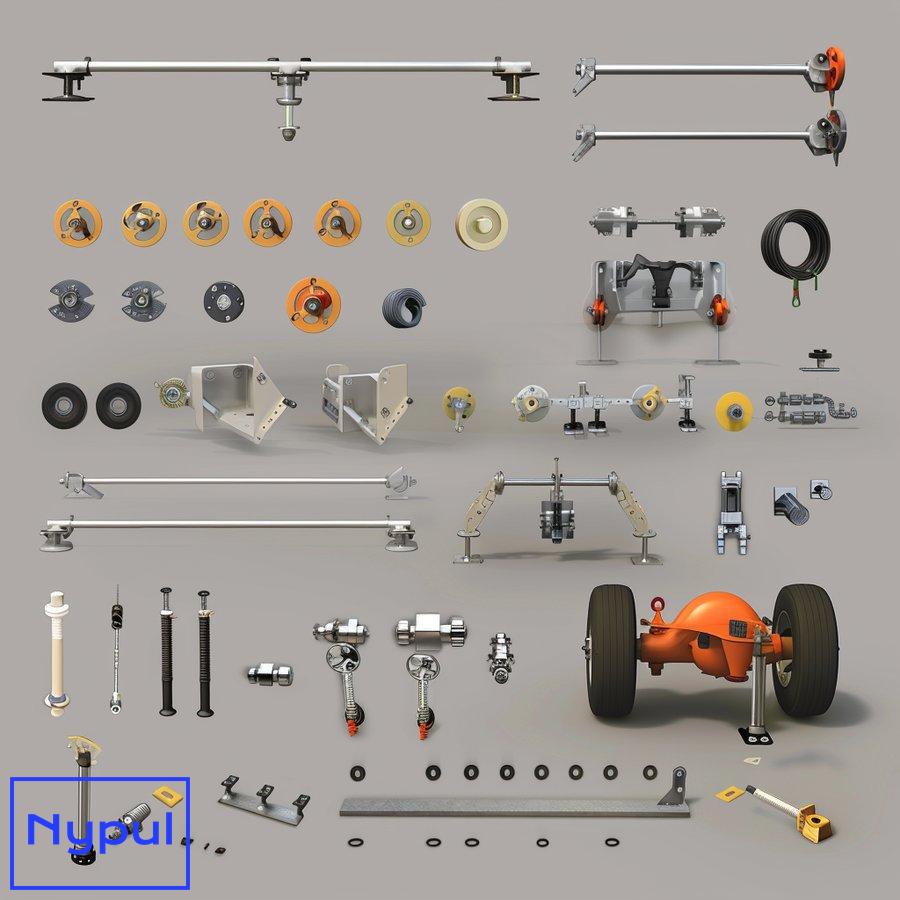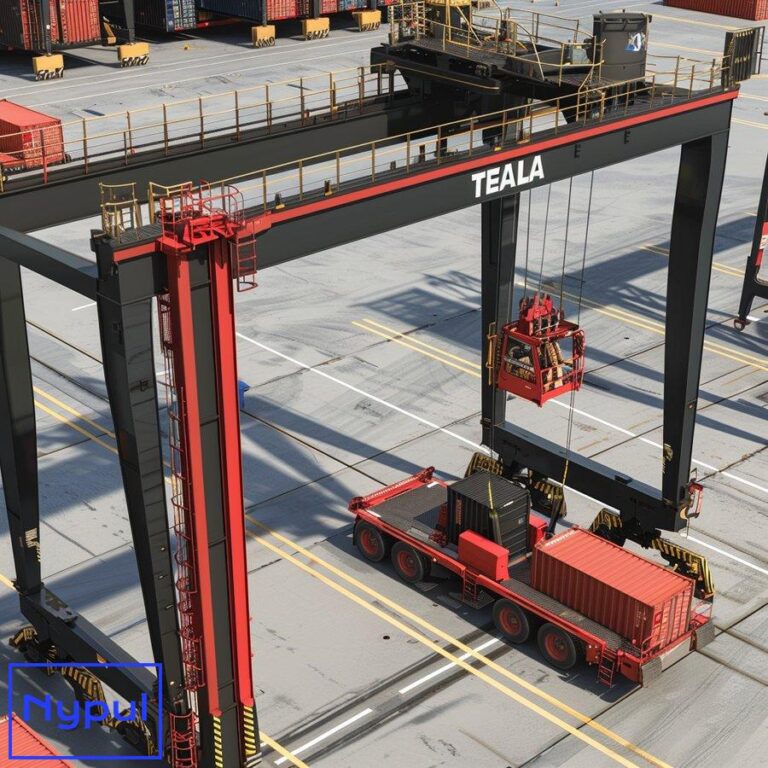What Is a Coupling System on a Truck
What is a truck coupling system?
A truck coupling system is a critical mechanical component that connects a truck tractor to a trailer, enabling the safe and efficient transportation of goods over long distances. This system forms the vital link between the power unit (truck) and the cargo-carrying unit (trailer), allowing them to function as a single articulated vehicle.
The coupling system serves multiple essential purposes:
Load transfer: It transfers the weight of the trailer and its cargo onto the truck’s rear axles, distributing the load for optimal stability and handling.
Articulation: The coupling allows the truck and trailer to pivot relative to each other, enabling turns and maneuvers that would be impossible with a rigid connection.
Safety: A properly functioning coupling system keeps the trailer securely attached to the truck, preventing dangerous separations during transit.
Brake and electrical integration: Many coupling systems incorporate connections for brake lines and electrical systems, ensuring the trailer’s brakes and lights function in sync with the truck.
The most common type of coupling system used in heavy-duty trucking is the fifth wheel coupling. This system consists of a horseshoe-shaped coupling plate mounted on the truck’s frame and a kingpin attached to the front of the trailer. When coupled, the kingpin locks into the fifth wheel, creating a secure connection that can withstand the forces experienced during normal driving conditions.
Other types of coupling systems include:
Pintle hooks: Often used for lighter trailers or in off-road applications.
Ball hitches: Common for smaller trailers and recreational vehicles.
Gooseneck couplings: Frequently used for horse trailers and some flatbed applications.
Understanding the basics of truck coupling systems is crucial for anyone involved in the trucking industry, from drivers and fleet managers to maintenance personnel and safety inspectors. A well-designed and properly maintained coupling system ensures the safe and efficient operation of truck-trailer combinations, forming the backbone of the modern logistics and transportation network.
How do coupling systems function on trucks?
Truck coupling systems operate through a combination of mechanical principles and carefully engineered components to create a secure, yet flexible connection between a truck and its trailer. The functionality of these systems is critical for the safe and efficient operation of commercial vehicles.
Mechanical engagement

The primary function of a coupling system is to create a strong mechanical link between the truck and trailer. In a fifth wheel coupling, which is the most common type used in heavy-duty trucking, this engagement occurs when the trailer’s kingpin slides into the slot of the fifth wheel plate on the truck.
Locking mechanism: As the kingpin enters the fifth wheel, it triggers a locking mechanism. This typically involves a set of jaws that close around the kingpin, securing it in place.
Safety latch: Most systems include a secondary safety latch that prevents accidental disengagement of the coupling.
Load distribution
Once engaged, the coupling system distributes the weight of the trailer across the truck’s frame and axles.
Vertical load transfer: The weight of the trailer’s front end is transferred through the kingpin and fifth wheel onto the truck’s rear axles.
Horizontal force management: The coupling also manages the pushing and pulling forces between the truck and trailer during acceleration and braking.
Articulation
A key function of the coupling system is to allow articulation between the truck and trailer, enabling turns and maneuvers.
Pivot point: The coupling acts as a pivot point, allowing the trailer to rotate relative to the truck.
Range of motion: Most fifth wheel couplings allow for approximately 90 degrees of articulation in either direction.
Brake and electrical integration
Modern coupling systems often incorporate connections for the trailer’s brake and electrical systems.
Air brake connections: Gladhand connectors on the back of the truck cab connect to the trailer’s air brake system, allowing synchronized braking.
Electrical connections: A multi-pin electrical connector links the truck’s electrical system to the trailer’s lights and other electrical components.
Automatic coupling systems
Some advanced coupling systems offer automated features to enhance safety and efficiency.
Sensor-based alignment: These systems use sensors to guide drivers during the coupling process, reducing the risk of misalignment.
Auto-locking mechanisms: Once properly aligned, these systems can automatically engage the locking mechanism.
Coupling process
The typical coupling process for a fifth wheel system involves several steps:
-
Alignment: The driver backs the truck under the trailer, aligning the kingpin with the fifth wheel slot.
-
Height adjustment: The trailer’s landing gear is adjusted to ensure the kingpin enters the fifth wheel at the correct height.
-
Engagement: As the truck continues to back up, the kingpin enters the fifth wheel slot and engages the locking mechanism.
-
Verification: The driver performs a tug test to ensure the coupling is secure.
-
Connection of air and electrical lines: The driver connects the brake and electrical lines between the truck and trailer.
-
Final checks: A visual inspection is performed to confirm proper coupling and connection of all systems.
Understanding the functionality of truck coupling systems is crucial for ensuring safe and efficient operations in the trucking industry. Proper training, regular maintenance, and adherence to safety protocols are essential for maximizing the performance and reliability of these critical components.
What are the main components of a truck coupling system?
A truck coupling system consists of several key components, each playing a crucial role in ensuring a secure and functional connection between the truck and trailer. Understanding these components is essential for proper operation, maintenance, and troubleshooting of the coupling system.

Fifth wheel assembly
The fifth wheel is the primary coupling device mounted on the truck.
Coupling plate: A large, horseshoe-shaped plate with a V-shaped slot for guiding the kingpin into position.
Locking mechanism: Typically consists of jaws or a wedge that secures the kingpin in place.
Release handle: Allows the driver to manually disengage the locking mechanism when uncoupling.
Mounting brackets: Attach the fifth wheel to the truck’s frame, often allowing for some adjustment.
Kingpin
The kingpin is the main connecting point on the trailer.
Steel pin: A cylindrical pin, usually 2 or 3.5 inches in diameter, that protrudes from the trailer’s front underside.
Mounting plate: A reinforced area on the trailer where the kingpin is securely attached.
Air and electrical connections
These components allow for the integration of brake and electrical systems between the truck and trailer.
Gladhand connectors: Quick-connect fittings for the air brake system, typically color-coded (red for emergency, blue for service).
Electrical socket: A multi-pin connector for trailer lights and other electrical components.
Coiled air and electrical lines: Flexible, coiled lines that connect the truck to the trailer, allowing for movement during turns.
Landing gear
While not directly part of the coupling system, landing gear plays a crucial role in the coupling process.
Support legs: Retractable legs that support the front of the trailer when it’s not coupled to a truck.
Crank handle: Allows for manual adjustment of the landing gear height.
Safety devices
Various components ensure the safety and security of the coupling.
Safety latch: A secondary locking mechanism that prevents accidental disengagement of the kingpin.
Indicator pins: Visual indicators that show whether the fifth wheel is properly locked.
Safety chains: While not typically used with fifth wheel couplings, they are common with other types of couplings as a backup connection.
Lubrication system
Proper lubrication is crucial for the smooth operation of the coupling system.
Grease fittings: Allow for the application of lubricant to moving parts.
Automatic lubrication systems: Some advanced systems automatically apply lubricant at regular intervals.
Adjustment mechanisms
These components allow for fine-tuning of the coupling system.
Height adjustment: Allows the fifth wheel to be raised or lowered to accommodate different trailer heights.
Fore and aft adjustment: Enables the fifth wheel to be moved forward or backward on the truck frame to optimize weight distribution.
Table: Common Fifth Wheel Components and Their Functions
| Component | Function |
|---|---|
| Coupling plate | Provides the main surface for trailer connection |
| Locking jaws | Secure the kingpin in place |
| Release handle | Allows manual disengagement of the locking mechanism |
| Mounting brackets | Attach the fifth wheel to the truck frame |
| Kingpin | Main connecting point on the trailer |
| Gladhand connectors | Quick-connect fittings for air brakes |
| Electrical socket | Connects trailer lights and electrical systems |
| Safety latch | Prevents accidental uncoupling |
| Indicator pins | Visually show if the fifth wheel is properly locked |
| Grease fittings | Allow for lubrication of moving parts |
Understanding these components and their functions is crucial for anyone involved in truck operations, maintenance, or safety inspections. Regular inspection and maintenance of these components ensure the continued safe and efficient operation of the truck-trailer combination.
Which types of coupling systems are commonly used in trucking?
The trucking industry employs various coupling systems, each designed to meet specific operational needs and vehicle configurations. Understanding the different types of coupling systems is crucial for selecting the most appropriate option for a given application.
Fifth wheel coupling
The most common type used in heavy-duty trucking.
Design: A horseshoe-shaped coupling plate on the truck that connects with a kingpin on the trailer.
Applications: Standard for semi-trailers in long-haul and regional trucking.
Advantages: High weight capacity, stability, and maneuverability.
Pintle hook coupling
Often used in military and construction applications.
Design: A hook on the truck that connects to a lunette ring on the trailer.
Applications: Ideal for off-road and rugged terrain use.
Advantages: Durability and ability to handle severe articulation.
Ball hitch coupling
Common for lighter trailers and recreational vehicles.
Design: A ball mounted on the truck that fits into a coupler on the trailer.
Applications: Utility trailers, boat trailers, and small campers.
Advantages: Simple design and easy to use for lighter loads.
Gooseneck coupling
Popular for horse trailers and some flatbed applications.
Design: A ball hitch mounted in the bed of a pickup truck, with the trailer having a long, curved neck that extends over the truck bed.
Applications: Horse trailers, livestock trailers, and some flatbed trailers.
Advantages: Improved stability and weight distribution compared to standard ball hitches.
Automatic coupling systems
Advanced systems that automate the coupling process.
Design: Varies by manufacturer but typically includes sensors and automated locking mechanisms.
Applications: Used in fleet operations where frequent coupling and uncoupling occur.
Advantages: Increased safety, reduced coupling time, and minimized risk of human error.
Drawbar coupling
Used for some heavy-duty applications and multi-trailer configurations.
Design: A rigid or hinged bar connecting the truck to the trailer.
Applications: Road trains, some agricultural applications.
Advantages: Allows for multiple trailers to be connected in a train configuration.
Sliding fifth wheel
A variation of the standard fifth wheel that allows for adjustable positioning.
Design: A fifth wheel mounted on rails that can be moved forward or backward on the truck frame.
Applications: Used when weight distribution needs to be adjusted based on load or regulations.
Advantages: Flexibility in weight distribution and improved maneuverability.
Table: Comparison of Common Truck Coupling Systems
| Coupling Type | Weight Capacity | Maneuverability | Typical Applications | Key Advantages |
|---|---|---|---|---|
| Fifth Wheel | High | Excellent | Semi-trailers, long-haul | Stability, high capacity |
| Pintle Hook | Medium to High | Good | Military, construction | Durability, off-road use |
| Ball Hitch | Low to Medium | Good | Utility trailers, RVs | Simple, easy to use |
| Gooseneck | Medium to High | Very Good | Horse trailers, flatbeds | Improved stability |
| Automatic | Varies | Excellent | Fleet operations | Safety, efficiency |
| Drawbar | High | Limited | Road trains, agriculture | Multi-trailer capability |
| Sliding Fifth Wheel | High | Adjustable | Variable load distribution | Flexibility |
Selecting the appropriate coupling system depends on several factors:
Load requirements: The weight and type of cargo being transported.
Operational environment: Whether the truck will be used on highways, city streets, or off-road.
Frequency of coupling/uncoupling: How often the trailer needs to be attached or detached.
Legal requirements: Regulations may dictate specific coupling types for certain applications.
Vehicle compatibility: Ensuring the coupling system is compatible with both the truck and trailer.
Understanding the characteristics and applications of different coupling systems allows trucking operators to make informed decisions that optimize safety, efficiency, and performance. Regular training for drivers and maintenance personnel on the proper use and care of these systems is essential for safe and effective trucking operations.
Why is proper coupling crucial for truck safety and performance?
Proper coupling between a truck and trailer is fundamental to the safety and performance of commercial vehicles. The importance of correct coupling extends beyond mere mechanical connection, influencing various aspects of vehicle operation and road safety.
Safety implications
Preventing trailer separation: A secure coupling is the primary defense against catastrophic trailer separation incidents.
Risk mitigation: Proper coupling significantly reduces the risk of accidents caused by trailer detachment.
Collision prevention: A well-coupled trailer is less likely to jackknife or sway, reducing the risk of multi-vehicle collisions.
Load security
Maintaining cargo integrity: Proper coupling ensures that the load remains stable during transit.
Weight distribution: Correct coupling allows for optimal weight distribution between the truck and trailer axles.
Reduced cargo damage: A secure connection minimizes excessive movement and vibration that could damage sensitive cargo.
Vehicle handling and stability
Enhanced maneuverability: A properly coupled truck-trailer combination is easier to control and maneuver.
Improved braking performance: Correct coupling ensures that the trailer’s brakes work in harmony with the truck’s braking system.
Reduced rollover risk: Proper weight distribution through correct coupling lowers the center of gravity, reducing rollover potential.
Fuel efficiency
Aerodynamic benefits: A well-coupled trailer aligns properly with the truck, reducing air resistance.
Reduced drag: Proper coupling minimizes gaps between the truck and trailer, improving overall aerodynamics.
Optimal power transfer: Correct coupling ensures efficient transfer of power from the truck to the trailer, improving fuel economy.
Regulatory compliance
Meeting legal requirements: Proper coupling is essential for compliance with transportation regulations.
Roadside inspection success: Correctly coupled vehicles are more likely to pass roadside inspections, avoiding fines and delays.
Insurance considerations: Proper coupling practices can positively impact insurance premiums and coverage.
Driver comfort and fatigue reduction
Improved ride quality: A well-coupled trailer contributes to a smoother ride for the driver.
Reduced physical strain: Proper coupling minimizes the physical effort required for maneuvering and backing.
Enhanced driver confidence: Knowing the coupling is secure allows drivers to focus on road conditions and traffic.
Equipment longevity
Reduced wear and tear: Correct coupling minimizes stress on both the truck and trailer components.
Extended component life: Proper alignment and weight distribution lead to less wear on tires, suspensions, and other critical parts.
Lower maintenance costs: Consistently proper coupling can result in fewer repairs and replacements over time.
Operational efficiency
Minimized downtime: Correct coupling procedures reduce the likelihood of coupling-related issues during transit.
Faster turnaround times: Well-trained drivers can couple and uncouple more efficiently, improving overall fleet productivity.
Reduced risk of cargo delays: Proper coupling minimizes the chances of en-route issues that could delay deliveries.
Table: Impact of Proper Coupling on Key Performance Indicators
| Performance Indicator | Impact of Proper Coupling | Potential Consequences of Improper Coupling |
|---|---|---|
| Safety | Reduced accident risk | Increased likelihood of trailer separation |
| Fuel Efficiency | Improved aerodynamics | Higher fuel consumption due to drag |
| Vehicle Longevity | Extended component life | Premature wear of tires and suspension |
| Driver Comfort | Enhanced ride quality | Increased driver fatigue and stress |
| Regulatory Compliance | Higher inspection pass rates | Fines and potential loss of operating licenses |
| Operational Efficiency | Minimized downtime | Increased delays and delivery failures |
Ensuring proper coupling is a responsibility shared by drivers, maintenance personnel, and fleet managers. It requires:
Comprehensive training: Regular instruction on correct coupling procedures and safety checks.
Routine inspections: Implementing rigorous pre-trip and post-trip inspection protocols.
Maintenance schedules: Regular servicing of coupling components to ensure optimal performance.
Technology adoption: Utilizing advanced coupling systems and sensors where appropriate.
Culture of safety: Fostering an organizational culture that prioritizes proper coupling as a critical safety measure.
By recognizing the crucial role of proper coupling in truck safety and performance, trucking operations can significantly enhance their overalloperational efficiency.
By recognizing the crucial role of proper coupling in truck safety and performance, trucking operations can significantly enhance their overall effectiveness and reliability. This commitment to safety and performance not only protects drivers and cargo but also contributes to the industry’s reputation and operational success.
How should coupling systems be maintained and inspected?
Regular maintenance and inspection of coupling systems are essential for ensuring their safe and effective operation. A proactive approach to maintenance can prevent accidents, reduce downtime, and extend the lifespan of both the truck and trailer components.
Routine inspections
Conducting routine inspections is vital for identifying potential issues before they lead to failure. Key inspection points include:
Visual checks: Inspect the fifth wheel assembly for signs of wear, damage, or corrosion. Look for cracks or deformities in the coupling plate and locking mechanism.
Kingpin condition: Examine the kingpin for wear or damage, ensuring it is free of rust or debris that could impede engagement.
Air and electrical connections: Check gladhand connectors and electrical sockets for secure connections and signs of wear. Ensure that all lines are free from leaks or abrasions.
Safety devices: Verify that safety latches and indicator pins are functioning correctly. Ensure that safety chains (if applicable) are properly attached.
Lubrication
Proper lubrication is crucial for maintaining the functionality of coupling systems. Regularly lubricate key components:
Fifth wheel plate: Apply grease to the coupling plate according to manufacturer specifications to ensure smooth operation.
Locking mechanism: Lubricate the locking jaws and release handle to prevent sticking or jamming.
Grease fittings: Use a grease gun to apply lubricant through any available fittings, ensuring all moving parts are adequately serviced.
Height adjustments
Adjusting the height of the fifth wheel can be necessary depending on the types of trailers being used. Regularly check:
Height settings: Ensure that the fifth wheel is set at the correct height for the specific trailers in use, allowing for proper engagement with the kingpin.
Adjustment mechanisms: Inspect any adjustment mechanisms for wear or damage, ensuring they function smoothly.
Training and procedures
Training drivers and maintenance personnel on proper inspection and maintenance procedures is essential:
Pre-trip inspections: Implement a standardized checklist for drivers to follow before departing. This should include checks on coupling systems as part of their routine safety inspections.
Ongoing education: Provide regular training sessions to keep staff updated on best practices for coupling system maintenance and inspection.
Table: Key Maintenance Tasks for Coupling Systems
| Maintenance Task | Frequency | Purpose |
|---|---|---|
| Visual inspections | Daily | Identify wear, damage, or corrosion |
| Lubrication | Monthly | Ensure smooth operation of moving parts |
| Height adjustments | As needed | Maintain proper engagement with kingpin |
| Safety device checks | Weekly | Confirm functionality of safety features |
| Air/electrical connection checks | Before each trip | Ensure secure connections |
By adhering to a comprehensive maintenance schedule, trucking companies can significantly reduce the risk of coupling-related incidents while enhancing overall operational efficiency. Regular training combined with diligent inspection practices fosters a culture of safety that benefits everyone involved in trucking operations.
What regulations govern truck coupling systems?
Regulations governing truck coupling systems are crucial for ensuring safety, performance, and compliance within the transportation industry. These regulations vary by country but generally aim to standardize practices across commercial trucking operations.

Federal regulations
In the United States, several federal agencies establish regulations related to truck coupling systems:
Federal Motor Carrier Safety Administration (FMCSA)
The FMCSA sets forth regulations that govern commercial vehicle operation, including standards for coupling systems:
-
Coupling device specifications: The FMCSA outlines minimum requirements for coupling devices used in commercial vehicles, including strength and design criteria.
-
Inspection requirements: Regulations mandate regular inspections of coupling systems as part of pre-trip checks to ensure they meet safety standards.
-
Driver training: The FMCSA emphasizes the importance of driver training regarding proper coupling techniques and safety protocols.
State regulations
In addition to federal regulations, individual states may have specific laws governing truck coupling systems:
-
State-specific requirements: Some states may impose additional requirements regarding coupling system design or maintenance practices based on local conditions or industry needs.
-
Roadside inspection protocols: States often have their own guidelines for conducting roadside inspections, which include checks on coupling systems as part of overall vehicle compliance assessments.
Industry standards
Various industry organizations also contribute to establishing best practices related to truck coupling systems:
-
Society of Automotive Engineers (SAE): SAE develops technical standards that address various aspects of truck design, including coupling systems. These standards provide guidelines for manufacturers regarding performance criteria.
-
American Trucking Associations (ATA): The ATA advocates for policies that enhance safety within the trucking industry, including promoting adherence to best practices in equipment maintenance and inspection.
International regulations
For international operations, compliance with global standards is essential:
-
United Nations Economic Commission for Europe (UNECE): The UNECE develops regulations governing vehicle construction and equipment standards in Europe. These regulations include specifications related to towing equipment and coupling devices.
-
International Organization for Standardization (ISO): ISO provides guidelines that influence best practices in manufacturing and maintaining truck components worldwide, including couplings.
Compliance importance
Adhering to these regulations is vital for several reasons:
-
Safety assurance: Compliance ensures that coupling systems meet established safety standards, reducing accident risks associated with improper couplings.
-
Legal protection: Following regulatory guidelines helps protect trucking companies from potential legal liabilities resulting from accidents caused by equipment failure.
-
Operational efficiency: Compliance with regulations often leads to improved operational practices, enhancing overall efficiency within trucking operations.
Table: Overview of Regulatory Bodies Governing Truck Coupling Systems
| Regulatory Body | Scope | Key Responsibilities |
|---|---|---|
| FMCSA | United States | Sets federal regulations for commercial vehicle operation |
| State DOTs | State-specific | Enforces local laws regarding vehicle compliance |
| SAE | Industry standards | Develops technical standards for vehicle design |
| ATA | Advocacy | Promotes safety policies within the trucking industry |
| UNECE | International | Establishes vehicle construction standards in Europe |
| ISO | Global standards | Provides guidelines for manufacturing best practices |
Understanding these regulations is critical for trucking companies seeking to maintain compliance while ensuring safe operations. Regular training on regulatory requirements should be incorporated into driver education programs to foster a culture of compliance within organizations.
How do you choose the right coupling system for your truck?

Selecting the appropriate coupling system for your truck involves careful consideration of various factors that impact compatibility, performance, and operational efficiency. Making an informed choice can significantly enhance safety while optimizing logistics capabilities.
Assessing load requirements
Understanding your load requirements is fundamental when choosing a coupling system:
-
Weight capacity: Determine the maximum weight your truck will frequently haul. Different coupling systems have varying weight limits; ensure your choice can handle your typical loads without exceeding manufacturer specifications.
-
Type of cargo: Consider whether you will be transporting standard freight, hazardous materials, or specialized cargo requiring unique handling considerations. Certain couplings may be better suited for specific types of trailers or loads.
Evaluating operational environment
The environment in which your truck will operate plays a crucial role in selecting a suitable coupling system:
-
Road conditions: If you frequently drive on rough terrain or unpaved roads, consider more durable options like pintle hooks designed for off-road use. For highway driving with standard trailers, a fifth wheel is typically ideal.
-
Maneuverability needs: Assess how often tight turns or complex maneuvers will be required during loading/unloading processes. Systems like gooseneck couplings offer enhanced stability during turns compared to traditional ball hitches.
Frequency of coupling/uncoupling
The frequency with which you need to couple or uncouple trailers impacts your choice:
-
Ease of use: If you frequently switch between trailers throughout your day-to-day operations, consider automatic or semi-automatic systems that streamline this process while minimizing time spent on each connection.
-
Driver skill level: Ensure drivers are trained adequately on whichever system you choose; simpler designs may be more manageable if driver experience levels vary widely within your fleet.
Legal considerations
Compliance with local laws regarding trailer connections is essential:
-
Regulatory requirements: Research any specific legal obligations related to trailer couplings within your jurisdiction; some regions may mandate certain types based on weight limits or cargo classifications.
-
Insurance implications: Verify whether your insurance policy has stipulations regarding specific types of couplings used; non-compliance could lead to coverage issues in case of an accident involving improper equipment.
Vehicle compatibility
Ensuring compatibility between your truck’s specifications and chosen couplings is vital:
-
Manufacturer recommendations: Consult your truck’s manufacturer guidelines regarding compatible couplings; this ensures optimal performance without risking damage due to mismatched components.
-
Installation considerations: Assess how easily each option can be installed on your vehicle; some may require additional modifications or specialized mounting hardware that could complicate installation processes.
Cost considerations
Budget constraints often influence decisions when selecting equipment:
-
Initial costs vs long-term value: While lower-priced options may seem appealing initially, consider potential long-term savings associated with higher-quality couplings that require less frequent replacement or repair over time due to durability issues.
-
Maintenance expenses: Factor in anticipated maintenance costs associated with different types; some may demand more regular servicing than others based on their design complexity or material composition.
Table: Factors Influencing Coupling System Selection
| Factor | Considerations |
|---|---|
| Load Requirements | Weight capacity & type of cargo |
| Operational Environment | Road conditions & maneuverability needs |
| Frequency of Coupling | Ease of use & driver skill level |
| Legal Considerations | Regulatory requirements & insurance implications |
| Vehicle Compatibility | Manufacturer recommendations & installation ease |
| Cost Considerations | Initial costs vs long-term value & maintenance expenses |
Choosing the right coupling system requires a comprehensive evaluation based on these factors. By investing time in understanding your operational needs and aligning them with appropriate equipment options, you can enhance both safety and efficiency within your trucking operations. Regular reviews should also be conducted as business needs evolve over time; staying informed about advancements in technology may reveal new opportunities for optimization as well.
This thorough approach ensures you select a coupling system that meets current demands while being adaptable enough should future changes arise within your logistics framework.






